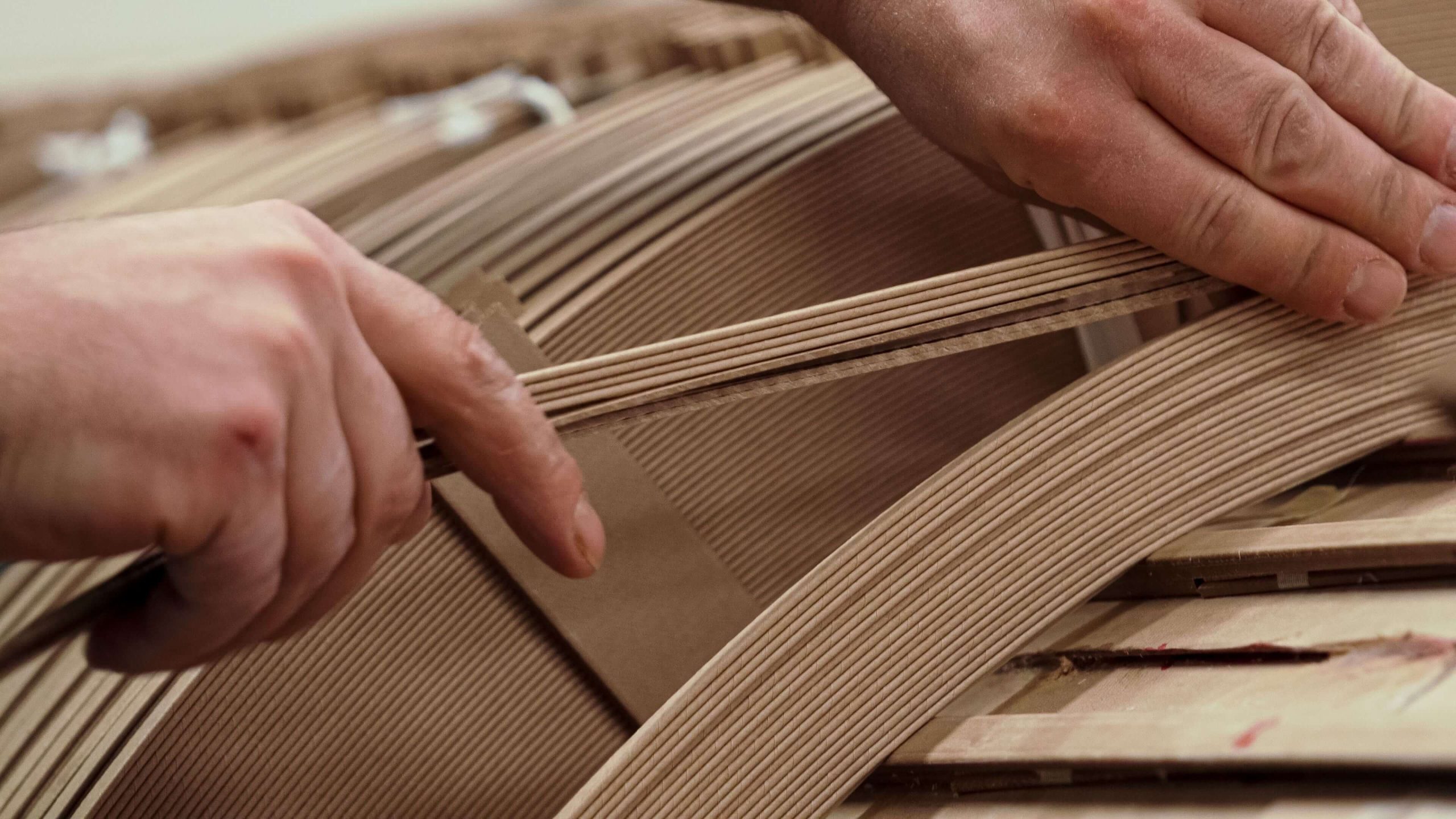Transforming Energy for America
Winding

In a core-type power transformer, the most common types of windings are continuous discs for high voltage and helical for low voltage.
The winding of disc-type coils is complex. The turns are wound in sections or discs – the first turn is wrapped around the cylinder, and the number of turns will be wound over this first turn to produce a disc section whose thickness is equal to turn width. The outside turn of this section is carried over to the next position. The turns now proceed from outside to inside; the turns are first wound from inside out and the section is then turned over by hand, without turning the coil lathe. This inside turn becomes the start of the next section, and the process is repeated until the coil is finished.
The complete coil consists of many disc sections wound from a continuous copper conductor without brazed joints. Radial spacers and washers separate the discs.
Extremely skilled and experienced winders are required for this process.
At VTC, we have made significant investments in automating winding machines to eliminate human errors. For example, an online computer keeps track of the number of turns. A robotic arm ensures the turns are aligned and tight. Tensions on incoming copper conductors are calibrated automatically. Winding specifications are fed to the machine through EDI to avoid human entry errors. This ensures reliability and requires fewer technicians at a given winding station. VTC has multiple horizontal and vertical winding machines.
